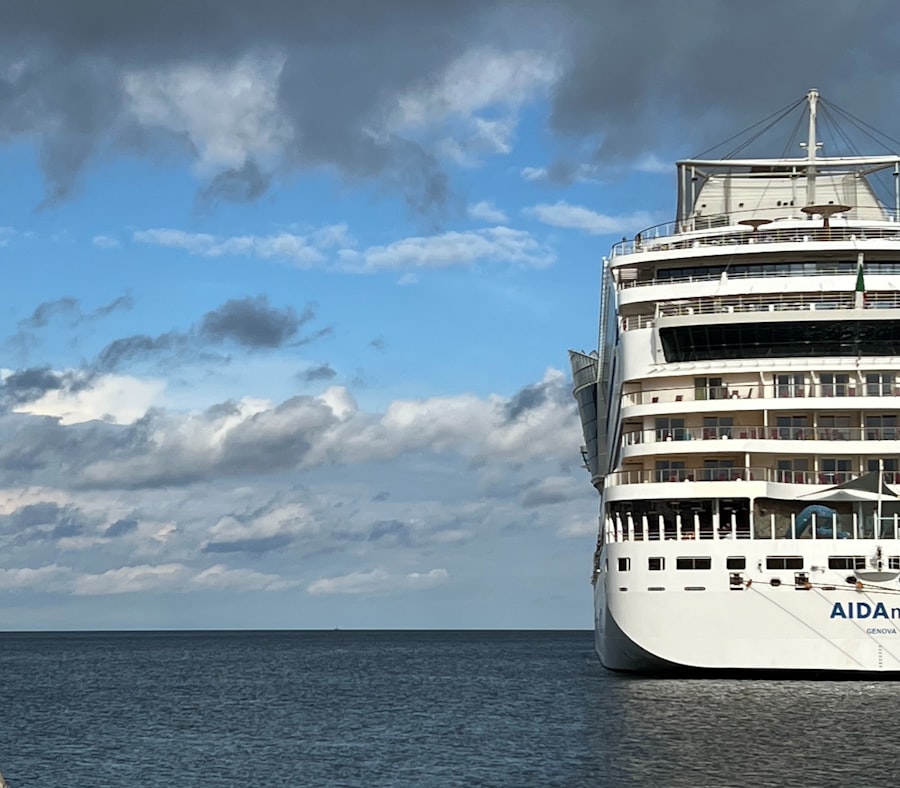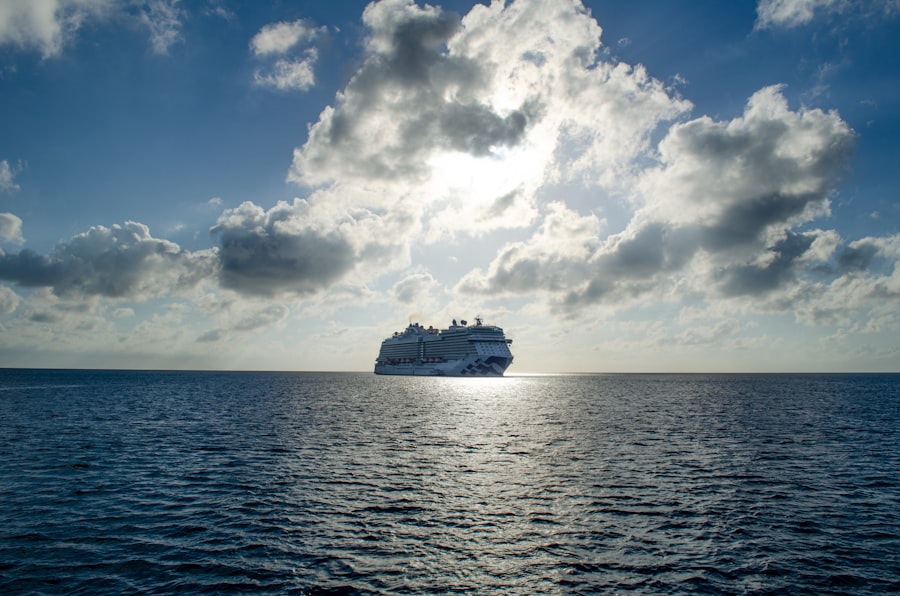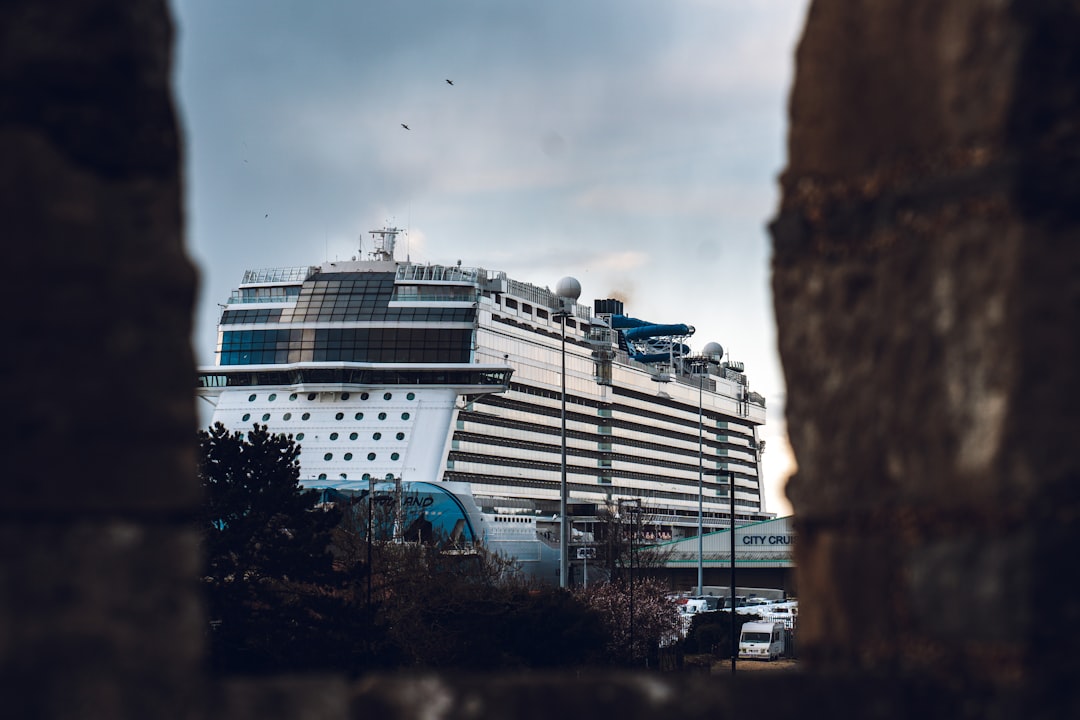The Drake Passage, a body of water that separates South America from Antarctica, is renowned for its tumultuous seas and breathtaking vistas. Stretching approximately 600 miles, this passage is not only a crucial maritime route but also a gateway to one of the most remote and pristine regions on Earth. For adventurers and nature enthusiasts alike, the Drake Passage represents both a challenge and an opportunity, offering a unique blend of natural beauty and the thrill of exploration.
Its waters are often characterized by unpredictable weather patterns and strong currents, making it a formidable crossing for even the most seasoned sailors. As travelers embark on their journeys through the Drake Passage, they are met with a sense of anticipation and excitement. The passage serves as a vital link for those venturing to the Antarctic Peninsula, where stunning icebergs, diverse wildlife, and breathtaking landscapes await.
The experience of crossing the Drake Passage is often described as a rite of passage for many adventurers, marking the transition from the familiar comforts of civilization to the wild, untamed beauty of Antarctica. This article will delve into the rich history, wildlife, and practical considerations for those planning to navigate this iconic maritime route.
Key Takeaways
- The Drake Passage is a body of water between South America’s Cape Horn and the South Shetland Islands of Antarctica, known for its challenging sailing conditions and rich wildlife.
- The Drake Passage has a long history of exploration and discovery, with famous expeditions by explorers such as Sir Francis Drake and Charles Darwin.
- The passage is home to a diverse range of wildlife, including penguins, seals, and various species of seabirds, making it a popular destination for wildlife enthusiasts.
- When choosing a cruise for the Drake Passage, it’s important to consider factors such as the size and amenities of the ship, the itinerary, and the level of comfort and luxury desired.
- Packing for a Drake Passage cruise requires careful consideration of the weather conditions, including warm and waterproof clothing, sturdy footwear, and essential travel documents.
- Activities and excursions in the Drake Passage include wildlife watching, photography, kayaking, and visiting research stations in Antarctica.
- Safety considerations for cruising the Drake Passage include the potential for rough seas and extreme weather, as well as the importance of following guidelines set by experienced expedition leaders and crew.
- The weather and climate in the Drake Passage are characterized by strong winds, rough seas, and rapidly changing conditions, making it essential to be prepared for all types of weather.
- The geology and geography of the Drake Passage are shaped by the movement of tectonic plates and the influence of the Antarctic Circumpolar Current, creating a unique and dynamic environment.
- Tips for making the most of a Drake Passage cruise include staying flexible, keeping an open mind, and embracing the spirit of adventure while exploring one of the world’s most remote and awe-inspiring regions.
- In conclusion, a cruise through the Drake Passage offers the ultimate adventure for those seeking to experience the raw beauty and untamed wilderness of Antarctica, making it a once-in-a-lifetime journey for nature lovers and adventure seekers alike.
History of the Drake Passage
The history of the Drake Passage is steeped in exploration and discovery. Named after Sir Francis Drake, an English sea captain and explorer who sailed through these waters in the late 16th century, the passage has long been a focal point for maritime navigation. Drake’s expedition was significant not only for its exploration but also for its role in establishing trade routes between Europe and the New World.
His journey through these treacherous waters marked one of the earliest European encounters with the southern seas, paving the way for future explorers. In the centuries that followed, the Drake Passage became a critical route for whalers, sealers, and explorers seeking to uncover the mysteries of Antarctica. The passage’s reputation for rough seas and unpredictable weather has made it both feared and respected among sailors.
Throughout the 19th and 20th centuries, numerous expeditions ventured into these waters, contributing to our understanding of the Antarctic region. The passage has witnessed countless tales of bravery and resilience as explorers faced the challenges posed by its formidable conditions.
Wildlife in the Drake Passage

The Drake Passage is not only a vital maritime route but also a thriving ecosystem teeming with diverse wildlife. The nutrient-rich waters support an array of marine life, making it a prime location for observing various species. Among the most iconic inhabitants are the majestic whales that migrate through these waters, including humpback, minke, and orca whales.
Their graceful movements and playful behavior captivate onlookers, providing unforgettable moments for those fortunate enough to witness them. In addition to whales, the passage is home to numerous seabird species that soar above its turbulent waters. Albatrosses, petrels, and skuas are commonly spotted gliding effortlessly on ocean breezes.
These birds are not only remarkable for their size and beauty but also play a crucial role in the marine ecosystem. The presence of such diverse wildlife highlights the ecological significance of the Drake Passage and underscores its importance as a destination for nature lovers and wildlife enthusiasts.
Choosing the Right Cruise for the Drake Passage
| Cruise Line | Duration | Departure Port | Activities |
|---|---|---|---|
| Quark Expeditions | 10 days | Ushuaia, Argentina | Kayaking, Zodiac excursions, Lectures |
| National Geographic Expeditions | 14 days | Buenos Aires, Argentina | Photography workshops, Wildlife viewing, Hiking |
| Ponant | 11 days | Montevideo, Uruguay | Scuba diving, Helicopter tours, Cultural visits |
Selecting the right cruise for traversing the Drake Passage is essential for ensuring a memorable experience. Various cruise lines offer different itineraries, amenities, and levels of comfort, catering to a range of preferences and budgets. Travelers should consider factors such as ship size, onboard facilities, and excursion options when making their choice.
Smaller expedition vessels often provide a more intimate experience, allowing passengers to get closer to wildlife and explore remote areas that larger ships cannot access.
Many reputable companies prioritize environmental sustainability and responsible tourism practices, ensuring that their operations have minimal impact on the fragile Antarctic ecosystem.
By choosing a cruise that aligns with their values and interests, travelers can enhance their overall experience while contributing to the preservation of this remarkable region.
What to Pack for a Drake Passage Cruise
Packing for a cruise through the Drake Passage requires careful consideration due to the unpredictable weather conditions and varying temperatures. Layering is key; travelers should bring moisture-wicking base layers, insulating mid-layers, and waterproof outer layers to stay comfortable in changing climates. A good quality waterproof jacket is essential for protection against wind and rain, while thermal gloves and hats will help keep warmth during chilly excursions.
Footwear is another important aspect of packing. Sturdy waterproof boots are recommended for landings on rocky shores or icy terrain. Additionally, travelers should not forget essentials such as sunscreen, sunglasses, and binoculars for wildlife watching.
A small backpack can be useful for carrying personal items during excursions. By preparing adequately with appropriate clothing and gear, travelers can fully enjoy their adventure without being hindered by discomfort.
Activities and Excursions in the Drake Passage

Cruising through the Drake Passage offers an array of activities and excursions that allow travelers to immerse themselves in the stunning Antarctic environment. Many cruises include guided landings on remote islands where passengers can explore unique landscapes and observe wildlife up close. These excursions often feature knowledgeable guides who provide insights into the region’s ecology and history.
In addition to land-based activities, passengers can partake in kayaking adventures that allow them to paddle through icy waters while surrounded by towering glaciers and floating icebergs.
Whether hiking on snow-covered trails or enjoying scenic boat rides among ice formations, there is no shortage of thrilling experiences awaiting travelers in this extraordinary region.
Safety Considerations for Cruising the Drake Passage
Safety is paramount when navigating the unpredictable waters of the Drake Passage. Travelers should be aware of potential hazards such as rough seas and sudden weather changes. Reputable cruise lines prioritize passenger safety by employing experienced crew members who are well-versed in navigating these challenging conditions.
Before embarking on their journey, passengers are typically briefed on safety protocols and emergency procedures. It is also advisable for travelers to stay informed about their own health conditions before undertaking such an adventure. Those prone to seasickness may want to consult with a healthcare professional about preventive measures or medications that can help alleviate symptoms during rough crossings.
By taking necessary precautions and adhering to safety guidelines provided by cruise operators, passengers can enjoy their journey with peace of mind.
Weather and Climate in the Drake Passage
The weather in the Drake Passage can be notoriously unpredictable, characterized by rapidly changing conditions that can shift from calm to stormy within moments. The passage experiences strong winds and turbulent seas due to its location between two major ocean currents—the Antarctic Circumpolar Current and the Humboldt Current. As a result, travelers should be prepared for varying weather patterns throughout their journey.
During the summer months (November to March), temperatures in the region can range from mild to chilly, with average highs around 40°F (4°C) to 50°F (10°C). However, wind chill can make it feel much colder. Rainfall is common, so waterproof gear is essential for staying dry during excursions.
Understanding these climatic factors allows travelers to better prepare for their adventure while appreciating the raw beauty of this remote maritime environment.
The Geology and Geography of the Drake Passage
The geology and geography of the Drake Passage are as fascinating as its history and wildlife. This body of water is situated between Cape Horn at the southern tip of South America and Antarctica’s South Shetland Islands. The passage’s depth varies significantly; some areas reach depths of over 15,000 feet (4,500 meters), creating an underwater landscape that is both dramatic and complex.
The surrounding geography features rugged coastlines, towering mountains, and vast ice fields that contribute to its stunning scenery. Glacial activity has shaped much of this landscape over millennia, resulting in breathtaking ice formations that captivate visitors’ imaginations. The interplay between land and sea creates a dynamic environment where geological processes continue to evolve, making it an area of interest not only for adventurers but also for scientists studying climate change and its effects on polar regions.
Tips for Making the Most of Your Drake Passage Cruise
To maximize enjoyment during a cruise through the Drake Passage, travelers should embrace flexibility and an open mind. Given the unpredictable nature of weather conditions, being adaptable can lead to unexpected adventures—whether it’s altering an itinerary due to rough seas or seizing opportunities for spontaneous wildlife sightings. Engaging with fellow passengers and crew members can also enhance the experience; sharing stories and insights fosters camaraderie among those on this shared journey.
Additionally, taking advantage of onboard educational programs can enrich understanding of the region’s ecology and history. Many cruises offer lectures led by experts in marine biology or polar exploration that provide valuable context for what travelers will encounter during their excursions. By immersing themselves in both planned activities and spontaneous moments alike, passengers can create lasting memories that extend beyond their time spent at sea.
The Ultimate Adventure in the Drake Passage
In conclusion, traversing the Drake Passage represents one of life’s ultimate adventures—a journey that combines breathtaking natural beauty with rich history and diverse wildlife encounters. From its storied past as a route for explorers to its current status as a gateway to Antarctica’s wonders, this passage captivates all who venture through its waters. With careful planning regarding cruise selection, packing essentials, safety considerations, and embracing spontaneity during excursions, travelers can ensure an unforgettable experience.
As they navigate this iconic maritime route, adventurers will find themselves immersed in an extraordinary world where nature reigns supreme—a place where towering icebergs meet tumultuous seas under ever-changing skies. The memories forged during this journey will linger long after returning home, inspiring future explorations into nature’s most remote corners. For those seeking adventure beyond conventional travel experiences, few destinations rival the allure of crossing the Drake Passage—a true testament to humanity’s enduring spirit of exploration.
The Drake Passage is renowned for its challenging waters, making it a thrilling route for adventurous cruise ship travelers. An article on MyGeoQuest delves into the unique experiences and breathtaking sights encountered on a Drake Passage cruise. For those interested in learning more about this exhilarating journey, you can read the full article by visiting
